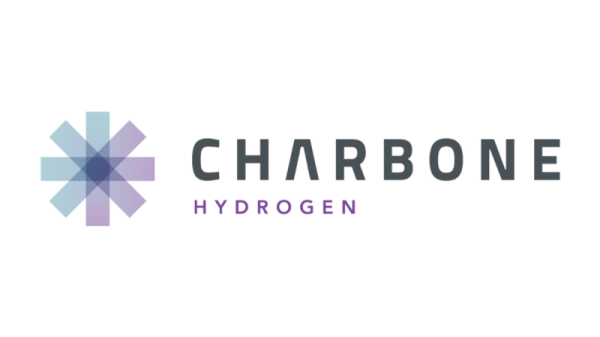The Inflation Reduction Act (IRA), which was passed in August 2022, was a main conversational point during the annual Biotech Showcase, which took place in San Francisco from January 8 to 10.
The new legislation has the potential to significantly impact the development and pricing of drugs, with some studies suggesting that it could lead to a 31 percent reduction in profits and potentially fewer drug approvals in the coming years.
Neal Masia, the co-founder and CEO of EntityRisk, spoke at the event about the changing landscape for biotech and healthcare companies, saying, “There’s just now insatiable demand from society, players and everybody to understand what the value is of all of these great innovations that we’re trying to create. That has created a lot of pressure in the US that never really has been there until the last few years to really upfront demonstrate what that value is.’
This pressure to demonstrate the value of new innovation is likely to be exacerbated by the provisions in the IRA, which are designed to control healthcare costs and make drugs more affordable.
How will the IRA impact biotech funding?
The IRA includes several provisions that could influence funding in biotech because of measures such as drug price negotiation and rebates for price increases, which could lead to reduced profits. However, there are also elements of the act that could create opportunities.
The challenge of creating innovative new drugs and treatments, as well as generating profits, all while dealing with high research and development costs was on the minds of all who contributed to the January 8 panel ‘Government Regulations and Policy: Are They Stifling Innovation?’
For Erin Hertzog, a partner at Foley Hoag, these regulatory challenges represent opportunities for positive change and growth. She suggested that the biotech industry take a proactive and solution-oriented approach: “I think one thing we talked a lot about (were) the sort of negative regulations. I do think there’s an opportunity to also engage with policymakers on positive changes, thinking innovatively about how they’re paying for cell and gene therapy, for example, and working with the government to sort of solve some of those issues, to sort of make clear we are partners and we want to come up with policy solutions that work for everyone.”
One of the potential unintended consequences of the IRA is that it may disincentivize the development of new drugs, particularly small-molecule drugs. The IRA’s provisions allow for Medicare to negotiate drug prices for small-molecule drugs nine years after approval, which will help lower costs for patients and the healthcare system but could also reduce the profitability of drug development and discourage investment in innovative new small-molecule therapies. In contrast, biologics are protected from price negotiations for 13 years.
Said Masia, ”I think one thing in terms of … the IRA and sort of the general gist to health policy (is) is it going in the direction that people should want it to go? And I think the intentions are all good, but the consequences will be the unintended consequences, some of which are relatively predictable, but still unknown to the people passing the laws.”
A longer period of protection is significant because it includes data exclusivity, which means that other companies cannot use the data from the original developer’s clinical trials to gain approval for a biosimilar version.
As a result, small-molecule drugs may not generate the same level of revenue as biologics or other high-cost treatments, resulting in a potential reduction of research and development for new ones. Therapies protected by a longer extended exclusivity period provide more time for pharmaceutical companies to recover development costs and generate revenue from these high-cost drugs.
Jim Healy, an executive partner at Sofinnova Investment, weighed in, “There’s an incentive for both pharmaceutical companies, biotech companies, and for me, investors to fund biologics, radiotherapeutics, cell therapy, gene therapy, and these are intrinsically much more expensive than any small molecule. And so we won’t know until this stands the test of time — five, 10, 15 years from now, I think one potential unintended consequence is that the next wave of drugs that are approved in, or come to market over the next five or 10 years, are going to be much more expensive than those that came to market over the past 10 years.”
How will the IRA impact biotech innovation?
Another major theme of Biotech Showcase was the impact of regulation and policy on innovation, not just in biotech, but in other healthcare industries as well. This issue was widely discussed, with experts offering diverse perspectives on the ways in which regulatory frameworks can both support and hinder the innovative development of new treatments and technologies.
Talking about cell and gene therapies during the January 8 panel “A Seminal Moment Arrives for Gene Therapy and Sickle Cell Disease — What’s Next?” Samarth Kulkarni, CEO of CRISPR Therapeutics (NASDAQ:CRSP), described the world’s first approval of CRISPR-based therapy for treating sickle cell anemia as “a watershed moment for gene editing.’
Since then, scientists have continued to push the boundaries of gene editing.
“There’s new disease models, you’re showing that editing can work in not just a handful of diseases, but tens and maybe even hundreds of diseases where this can be applicable,” he continued. “And I should acknowledge that we’re standing on the shoulders of many companies that came before, on the shoulders of giants. Take the work that Bluebird (NASDAQ:BLUE) has done in terms of cell and gene therapies, what Alnylam (NASDAQ:ALNY) has done in terms of delivery and many other companies. All that’s converging to make this a rapid pace of innovation.”
Innovation that is seemingly not lost on the adjacent pharmaceutical industry. While speaking at the January 10 “Biotech Funding” panel, Maha Katabi, general partner at Sofinnova Investments, noted that the final two months of 2023 saw big pharma step in and offer some of the biggest M&A deals seen by the biotech industry since 2018.
“Pharma companies have now been (put) to work, (and) there is a great need to replenish (the) innovation pipeline. There’s plenty of innovation in our sector, especially in the hands of biotech companies, and once proof of concept is achieved, that becomes a very rarefied but unique class that pharma is very interested in talking to.”
Peter Rubin, the executive director of No Patient Left Behind, was at the Biotech Showcase to talk about how his company sees the IRA impacting innovation in the sector. “There should be sufficient incentives in place to continue robust innovation,” he said during his opening remarks. “What (No Patient Left Behind) is trying to do is really mobilize folks like yourself in this room around how we achieve this biotech affordability, because the IRA is here. It’s being implemented, but it’s not the end of the conversation. It’s just the end of the beginning. And if I work them together, I think we can make some positive changes.”
When asked by journalist and author David Ewing Duncan, who moderated the conversation, about what is keeping panel members up at night regarding health policy, Rubin had this to say:
“There is the ability to achieve biotech affordability innovation. And the problem is that you have folks on one side who hate biotech more than they want to help patients. And you have bad actors that sometimes make it sound like they want to help themselves more than patients. And I think what we’re trying to do is how do we align everybody together around modern changes that can improve the IRA, extend the positive parts like lowering out-of-pocket costs for patients — no matter what you get your healthcare through Medicare or the exchanges or your employer — but at the same time fix some of the anomalies like the disincentive for small molecule innovation.’
He pointed out that without a careful balance between biotech affordability and innovation, stakeholders and patients alike will achieve neither.
“I think there are some very important manufacturing innovations,” said Masia, referring to how quickly development of the COVID-19 vaccine came about. “That’s an amazing innovation separate from inventing the drug, manufacturing the drug. So there is room for a lot of optimism around sort of the components of innovation, but with this regulatory sort of uncertainty and just not being sure which direction things are going, and how they’re going to think about your drug is something that as an investor or as a company, you really have to think hard about and say like, ‘Okay, what are the scenarios that might happen? And am I okay in all those scenarios?’ And the answer is probably not in all of them. So you need to really be rooting for the right thing.
Investor takeaway
Wrapping up the discussion on biotech funding, Biotechnology Innovation Organization Chairman Ted Love had this to say, “We need to be articulating and educating about who we are and what we do to the employees of all these companies, number one. And when you think about it, the politicians from Michigan would never have attacked the automobile industry; they defended the automobile industry tooth and nail.
“We have not had that. So we need to really start to build a kind of support that we’re capable of building. A lot of people do not understand that the companies that invent the drugs don’t set the price that you pay when you go to Walgreens (NASDAQ:WBA). People intuitively think that, and we don’t say anything about it. So I think there are a couple of things we (can) do. One is that we need to talk to people about what we do and explain to people what we do, because it is a complicated system.”
Securities Disclosure: I, Meagen Seatter, hold no direct investment interest in any company mentioned in this article.







































